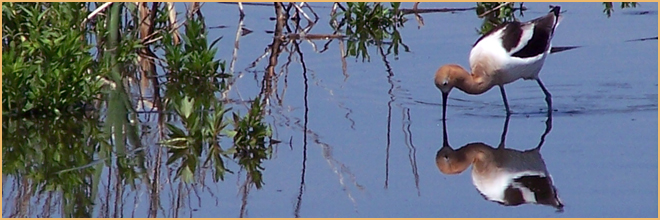Government Grants
Business Grants
Home Owner Programs
Federal Programs
About Us
Coastal Program - 2022
The U. S. Fish and Wildlife Service (Service) Coastal Program is a voluntary, community-based program that provides technical and financial assistance through cooperative agreements to coastal communities, conservation partners, and landowners to restore and protect fish and wildlife habitat on public
and private lands.
The Coastal Program staff coordinates with partners, stakeholders and other Service programs to identify geographic focus areas and develop habitat conservation goals and priorities within these focus areas.
Geographic focus areas are where the Coastal Program directs resources to conserve habitat for Federal trust species.
Projects are developed in collaboration with partners, and with substantial involvement from Service field staff.
Coastal Program projects must support the missions of the U. S. Department of the Interior (DOI), U. S. Fish and Wildlife Service (Service), and the Coastal Program, and be based on biological principles and the best available science.
The Coastal Program takes an adaptive approach to designing and implementing coastal habitat protection and restoration strategies that anticipate and ameriorate the impacts of climate change and other environmental stressors.
Coastal Program habitat improvement projects strive to increase coastal resiliency by improving the ability of coastal ecosystems to adapt to environmental changes and supporting natural and nature-based infrastructure projects to protect and enhance coastal habitats.
The Coastal Program also supports the vision of the DOI's America the Beautiful initiative, including:
Pursuing a collaborative and inclusive approaches to conservation; Acheiving conservation of 30 percent of America’s lands and waters over the next 30 years; Encouraging locally-led conservation efforts; 4) Supporting the habitat conservation priorities of Tribes; Pursuing conservation and restoration approaches that create jobs and stimulate local economies; Encouraging the voluntary stewardship efforts of private landowners; Using the best available science as a guide; and Building on existing tools and strategies with an emphasis on flexibility and adaptive approaches.
The Coastal Program staff coordinates with partners, stakeholders and other Service programs to identify geographic focus areas and develop habitat conservation goals and priorities within these focus areas.
Geographic focus areas are where the Coastal Program directs resources to conserve habitat for Federal trust species.
Projects are developed in collaboration with partners, and with substantial involvement from Service field staff.
Coastal Program projects must support the missions of the U. S. Department of the Interior (DOI), U. S. Fish and Wildlife Service (Service), and the Coastal Program, and be based on biological principles and the best available science.
The Coastal Program takes an adaptive approach to designing and implementing coastal habitat protection and restoration strategies that anticipate and ameriorate the impacts of climate change and other environmental stressors.
Coastal Program habitat improvement projects strive to increase coastal resiliency by improving the ability of coastal ecosystems to adapt to environmental changes and supporting natural and nature-based infrastructure projects to protect and enhance coastal habitats.
The Coastal Program also supports the vision of the DOI's America the Beautiful initiative, including:
Pursuing a collaborative and inclusive approaches to conservation; Acheiving conservation of 30 percent of America’s lands and waters over the next 30 years; Encouraging locally-led conservation efforts; 4) Supporting the habitat conservation priorities of Tribes; Pursuing conservation and restoration approaches that create jobs and stimulate local economies; Encouraging the voluntary stewardship efforts of private landowners; Using the best available science as a guide; and Building on existing tools and strategies with an emphasis on flexibility and adaptive approaches.
Who's Eligible
Relevant Nonprofit Program Categories
Obtain Full Opportunity Text:
Link to Opportunity in SAMS Domestic
Additional Information of Eligibility:
U. S. non-profit, non-governmental organization with 501(c)(3) status with the Internal Revenue Status (IRS) must provide a copy of their Section 501(c)(3) status determination letter received from the Internal Revenue Service.
Federal law mandates that all entities applying for Federal financial assistance must have a valid Dun & Bradstreet Data Universal Number System (DUNS) number and have a current registration in the System for Award Management (SAM).
Request a DUNS number at http://fedgov.dnb.com/webform.
Exemptions: The SAM registration requirement does not apply to individuals submitting an application on their own behalf and not on behalf of a company or other for-profit entity, state, local or Tribal government, academia or other type of organization.
Full Opportunity Web Address:
https://mygrants.servicenowservices.com/grants?id=grants_funding_opportunity&table=u_domestic_funding_opportunity&sys_id=f8afc4e31b8881500a76ecace54bcb9a&view=Default
Contact:
Agency Email Description:
john_huffman@fws.gov
Agency Email:
Date Posted:
2021-12-13
Application Due Date:
Archive Date:
2011-04-30
Social Entrepreneurship
Spotlight
Social Enterprise Piles Textbooks for Change

Textbooks for Change, a London-based social enterprise that has obtained the B Corporation seal for positive social and environmental impact, is seeking investors that would be helping the company expand.

